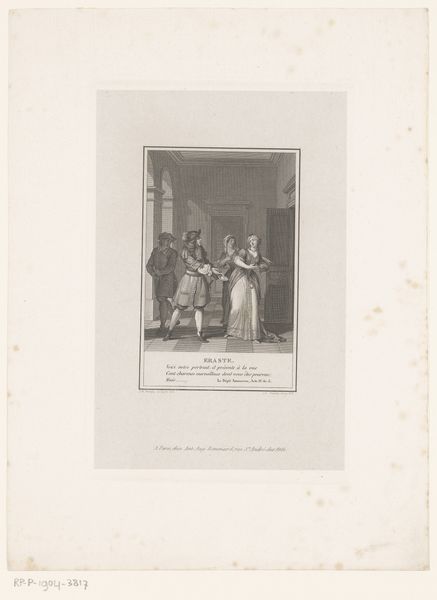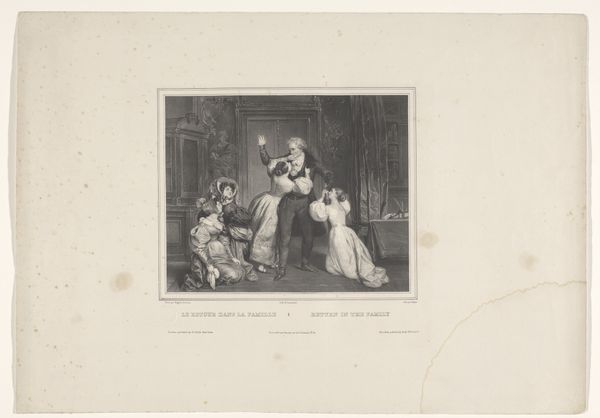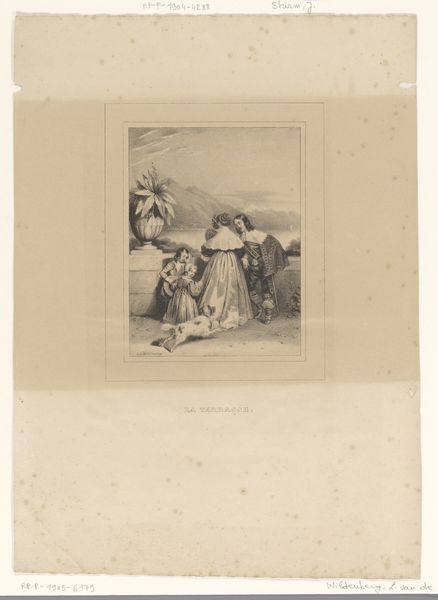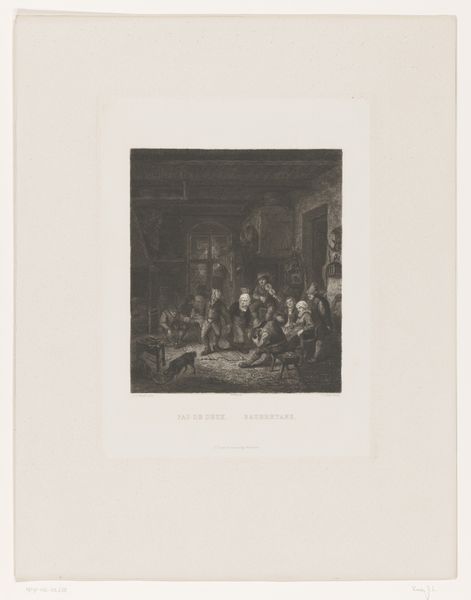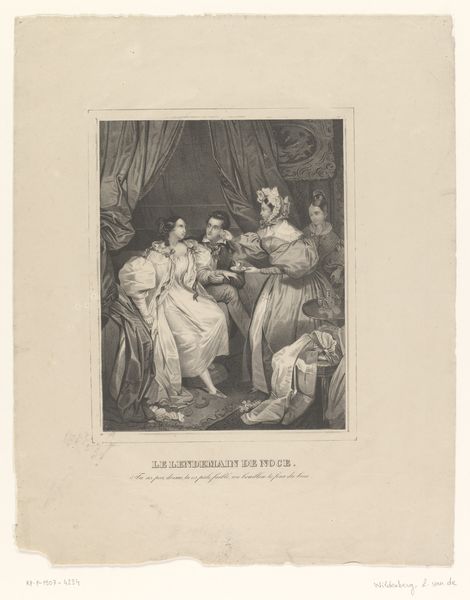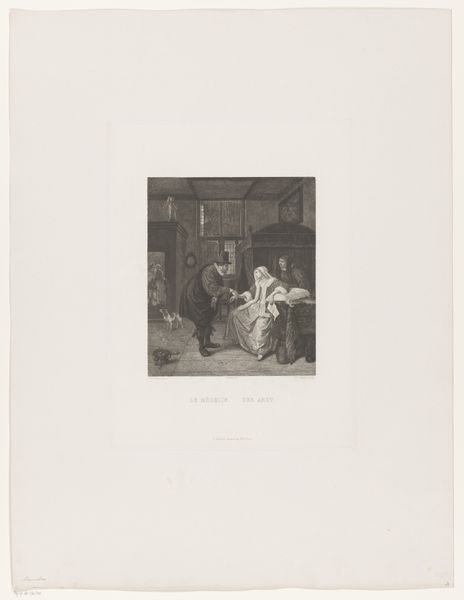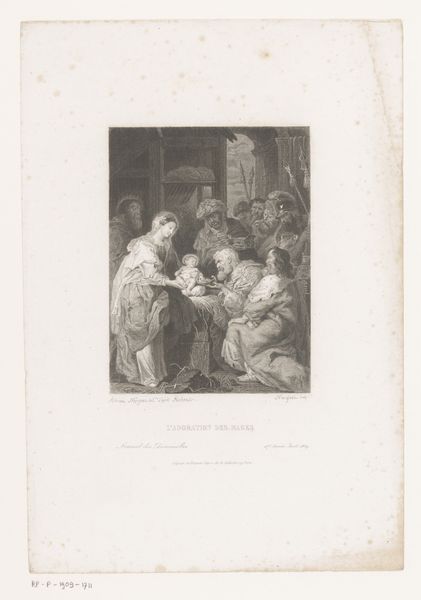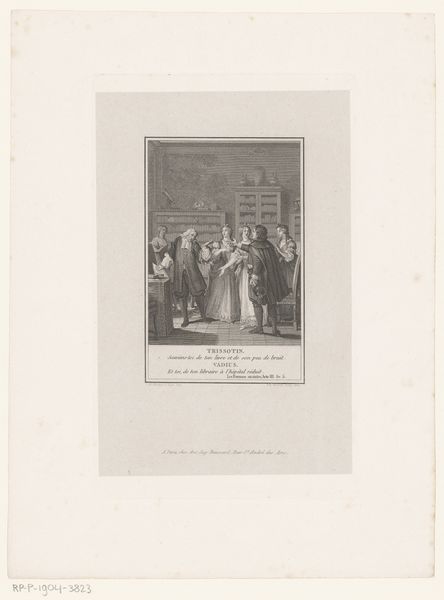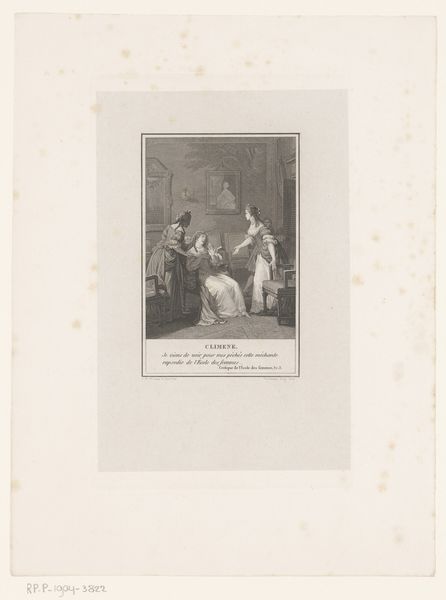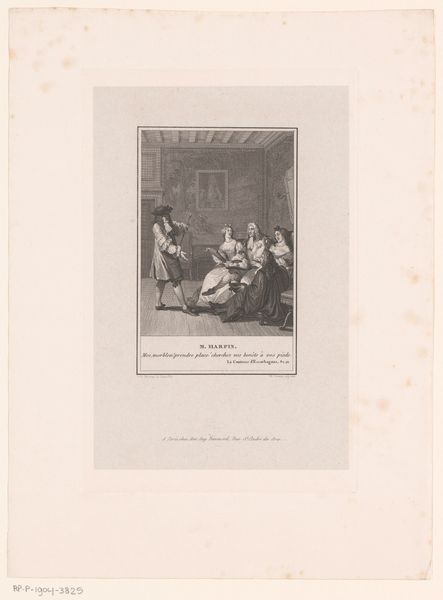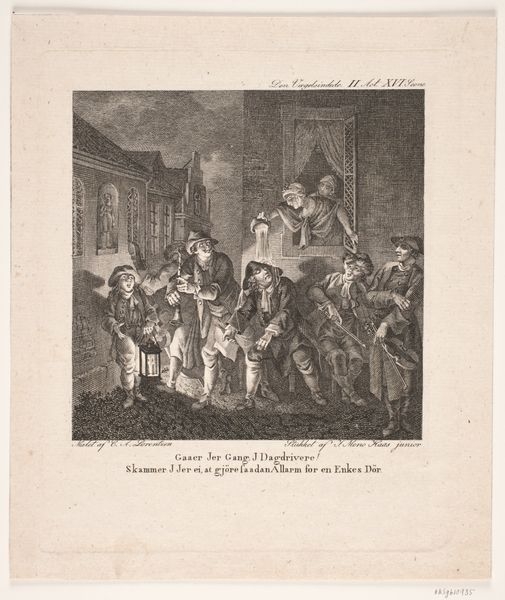
print, engraving
#
narrative-art
# print
#
old engraving style
#
figuration
#
romanticism
#
history-painting
#
engraving
Dimensions: height 228 mm, width 147 mm
Copyright: Rijks Museum: Open Domain
Alfred Revel created this print, "Wilfrid succumbs to his wounds before Matilda," using a method called etching sometime between 1765 and 1865. Etching involves coating a metal plate with a waxy, acid-resistant material, then scratching an image into that coating. When the plate is bathed in acid, the exposed lines are eaten away, creating grooves that hold ink. The whole plate is then inked and wiped clean, leaving ink only in those grooves. Finally, paper is pressed against the plate, transferring the image. Look closely, and you can see how the crisp lines lend a stark quality to the dramatic scene. Each stroke Revel made determined the final image, demanding precision and control. The process, and the marks left behind, reflect both the skill of the artist and the physical demands of the craft. It reminds us that even in a print, seemingly easily reproduced, human labor and specific techniques are central to the artwork's existence. And that even an image can be understood as the product of a complex making process.
Comments
No comments
Be the first to comment and join the conversation on the ultimate creative platform.
